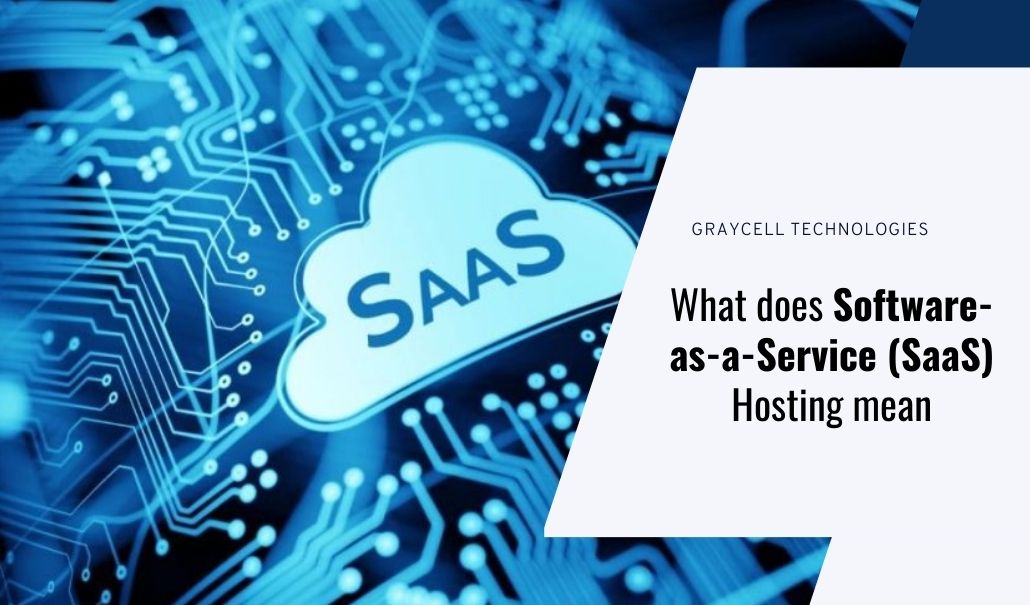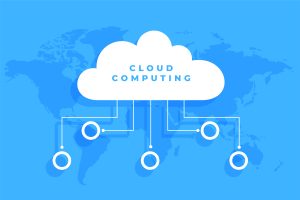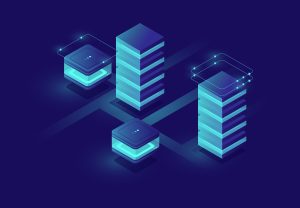In the last two decades, our life has become so dependent on online services that it is hard to imagine our daily tasks or work without them. SaaS is all around us, and we use it without even knowing it. This article will try to answer the most commonly asked questions about SaaS, the other “as a service” models, and SaaS hosting so you can make sense of it all in your head.
What are the different “as a service” models/types
Currently, there are three main “as a service” type models. All three incorporate cloud technologies delivered from their own hosted hosting server to visitors or clients over the web.

The main difference between these types of services lies in the product’s wholeness. You can view SaaS(Software as a Service) products as fully managed applications developed by the given vendor and already in production; IaaS (Infrastructure as a Service) products simply delegate data center resources, and PaaS (Platform as a Service) products offer you the service or framework that helps developers create their own customizable applications.
How do SaaS, IaaS and PaaS work
To make a distinctive sense of what we briefly went over above, we will provide a more detailed explanation of these products below.
Users do not have to download SaaS applications to use them. The vendors handle all relevant updates, support, security, and maintenance whenever necessary. In short, the end user will only pay for the service (usually done via monthly subscriptions), and management of the application will be in the hands of the developing party.
SaaS applications are traditionally ‘multi-tenant.’, meaning that multiple end-users will share one database, which the SaaS vendor will separate software security layers rather than having them hosted on a different hosting environment.
Examples of SaaS products:
- Webmail
- Google Mail
- Trello
- cPanel
- Netflix
IaaS is perfect for companies that rent out a data center space and merely use the cloud resources on which they deploy their applications or services. These cloud resources include storage, hardware, networking, and different types of virtualization software. The distinction between IaaS and SaaS is that the company must take care of updates and patches on the infrastructural level and ultimately maintain its rented resources.
Examples of IaaS:
- Digital Ocean
- Linode
- AWS
- Google Cloud
- IBM Cloud
The last service we are going to look at is PaaS. Essentially it supplies a framework or development tools to the company and lets it use them to create custom scripts or applications. In this model, the vendor offering these tools and frameworks must manage the data center resources that support them. The company using these tools does not need to handle anything related, except the custom applications they build and the type of data they use.
Here are some PaaS examples so you can get an idea:
- Heroku
- SAP Cloud
- Docker
- AWS Lambda
- Google App Engine
Now that we covered all the “as a service” type products, let’s go into the bread and butter of this article, which is SaaS and, more specifically – SaaS hosting.
Difference between SaaS and SaaS hosting

We outlined that the SaaS product is an already developed product that the customer can use along with all its features. Moreover, the user can access this application from any device, as long as he has a stable internet connection. Of course, the user will be able to do that as long as he follows the business model of the SaaS product, which is usually a monthly subscription or a larger one-time payment.
Pros of SaaS
- End-users prefer SaaS solutions due to their “low-maintenance” appeal. They are “self-provisioning,” and you don’t need to worry about updates and maintenance of the application itself.
- They are typically more affordable because you don’t need to invest in development time or cloud infrastructure. You just use an already existing product that gets the job done.
- They are more visually pleasing due to the nature of the SaaS applications. Since they are propagating quickly and many people are adapting this product type, there is a lot of competition and of course – many SaaS products to choose from and pick the best fit for your needs.
- Many of the most commonly used SaaS applications have integrations with other famous ERP or CRM services via APIs. The user won’t have to worry about adding their own integration as the developers have already done that for them (in most cases!).
Cons of SaaS
- The lower entry price can be deceiving in the long run. Before investing in a SaaS application, you should create spreadsheets and analyze the cost a couple of years ahead. Many SaaS providers will artificially inflate pricing as time goes on. They will justify these new price tags with cleverly marketed slogans you were getting initially but did not know about.
- Please read the contract agreement and all its entirety before purchasing. A binding clause may restrict you from getting access to your data unless you either pay a specific price or keep using the service for a particular amount of time.
- Since most SaaS applications are HTML/Web-based, the app may be clunky or slower than a traditional desktop application. If the application works with a lot of data – such as sales leads and has a lot of information inside – you may need to wait a while before seeing a complete list of clients, which could be a tedious inconvenience.
- The SaaS vendor model is quite popular these days, and hundreds if not thousands of companies are popping up daily. Please research before purchasing a product because the SaaS vendors may not have built their business model with a long-term plan. They may just look into making quick cash and then rug-pulling the entire business. If that happens, you are looking into many headaches, interruptions, and even more research.
SaaS hosting, on the other hand, refers to the actual Hosting platform the SaaS vendor hosts the files/databases of the mentioned app. With this type of hosting, the company deploys the app/software on a cloud server, running all necessary services for the application to function.
Customers can access the software from the Internet if their device is connected. They are not required to download a copy of the application or install anything on the device. SaaS highly favors the end users, as they do not need to maintain, update or handle anything related to the application itself, as the vendor takes care of this on a server level or the application’s backend. Software developers also prefer this model, as they will leave the server management to the Hosting Company itself while focusing all their efforts on improving their applications. When the application requires an update, the developers can push their updated codes into the cloud and deploy the patch globally. The end user won’t have to do anything from their end and will receive the updated application immediately since the developers pushed the updates in the backend.
Pros of SaaS hosting
- Scalability: SaaS hosting cloud providers provide seamless on-demand scalability whenever the developers need more resources. This allows you to plan out upgrades during busy times and, of course – scale back down should your SaaS application not need that many resources.
- Availability: The option to access the SaaS application on any device and location on the planet is way too good to pass on. Whether chilling on the beach, flying to see your family, or on a business trip – you just open your laptop or phone and connect when needed.
- No additional Hardware Costs: The entire processing power for the SaaS application comes from the cloud provider who hosts it. You don’t need to invest in additional hardware to maintain optimal workflow. Other benefits include turning your office greener, which is always good for the environment.
Cons of SaaS hosting
- Data loss/ownership concerns: In recent years, giant corporations have gotten their data hacked from cloud data centers via third-party apps that are generally auctioned to the person or organization with the biggest wallet. (A good recent example is GoDaddy’s reporting a data breach, where the hackers allegedly exposed 1.2 million customers’ data). Another concern is that the SaaS company may find a loophole in your SLA and practically start “owning” your data. When structuring your SLA agreement with the company, you leave no loopholes and ensure that security and data ownership clauses are solid and in your favor.
- Vendor reliability: You need to ensure that if the SaaS company you are using goes out of business, you can export your data and move to a different provider, get some notice, or a financial reprimand. Again, pay attention to your SLA to avoid future headaches!
To sum up what we just said: SaaS is the product the customer pays for and uses, while SaaS Hosting is the environment wherein the existing software is hosted and managed by the developers.
The model is very appealing to consumers and vendors and quickly gaining popularity.
According to a recent McKinsey & Company report, technology industry analysts predict further growth in the software as a service market. They expect to see the market share for SaaS products reach a whopping $200 billion by 2024.






